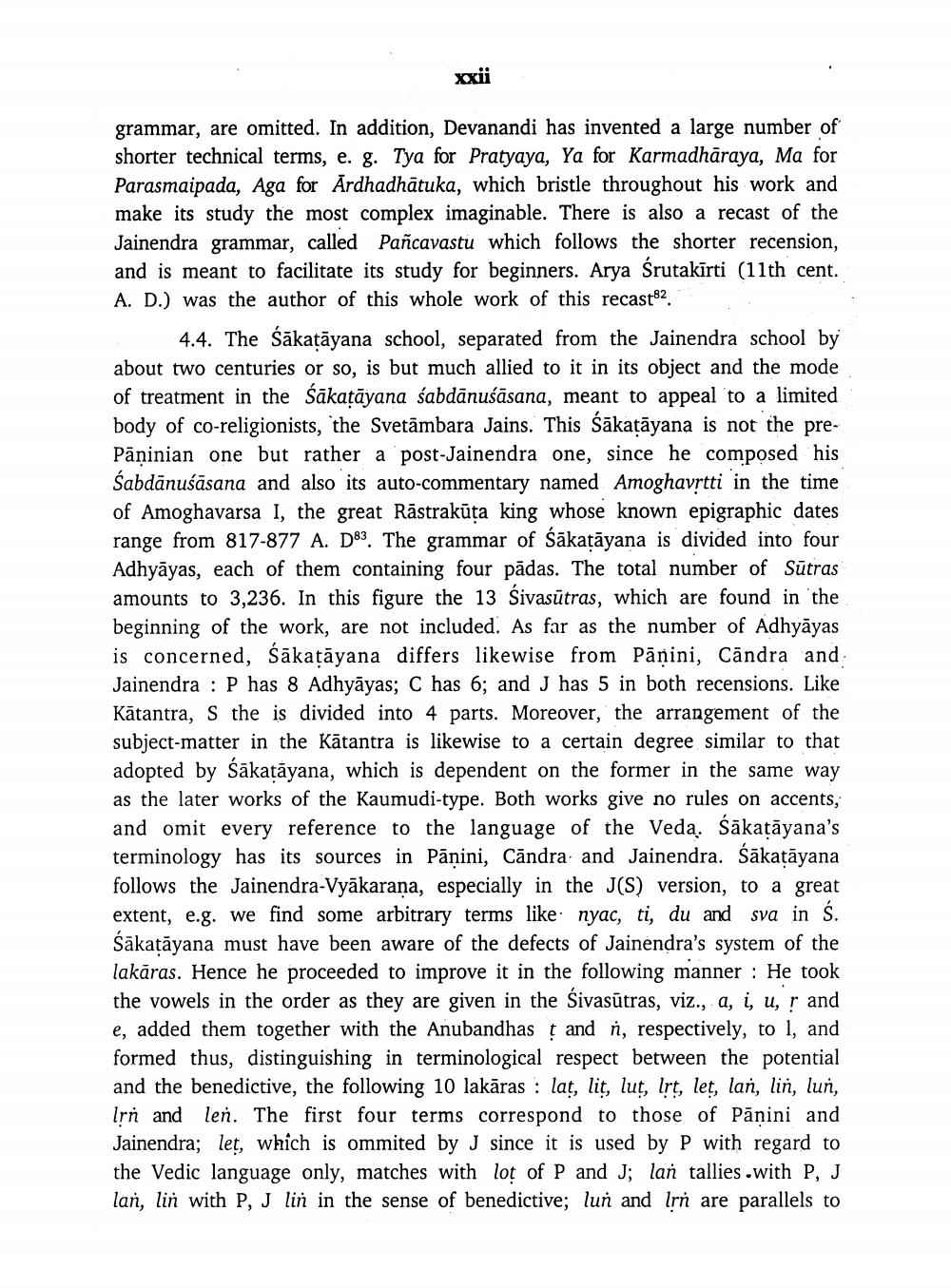________________ xxii grammar, are omitted. In addition, Devanandi has invented a large number of shorter technical terms, e. g. Tya for Pratyaya, Ya for Karmadharaya, Ma for Parasmaipada, Aga for Ardhadhatuka, which bristle throughout his work and make its study the most complex imaginable. There is also a recast of the Jainendra grammar, called Pancavastu which follows the shorter recension, and is meant to facilitate its study for beginners. Arya Srutakirti (11th cent. A. D.) was the author of this whole work of this recast(r)2. 4.4. The sakatayana school, separated from the Jainendra school by about two centuries or so, is but much allied to it in its object and the mode of treatment in the sakatayana sabdanusasana, meant to appeal to a limited body of co-religionists, the Svetambara Jains. This sakatayana is not the prePaninian one but rather a post-Jainendra one, since he composed his Sabdanusasana and also its auto-commentary named Amoghavrtti in the time of Amoghavarsa I, the great Rastrakuta king whose known epigraphic dates range from 817-877 A. D83. The grammar of Sakatayana is divided into four Adhyayas, each of them containing four padas. The total number of Sutras amounts to 3,236. In this figure the 13 Sivasutras, which are found in the beginning of the work, are not included. As far as the number of Adhyayas is concerned, sakatayana differs likewise from Panini, Candra and Jainendra : P has 8 Adhyayas; C has 6; and J has 5 in both recensions. Like Katantra, s the is divided into 4 parts. Moreover, the arrangement of the subject matter in the Katantra is likewise to a certain degree similar to that adopted by Sakatayana, which is dependent on the former in the same way as the later works of the Kaumudi-type. Both works give no rules on accents, and omit every reference to the language of the Veda. Sakatayana's terminology has its sources in Panini, Candra and Jainendra. Sakatayana follows the Jainendra-Vyakarana, especially in the J(S) version, to a great extent, e.g. we find some arbitrary terms like nyac, ti, du and sva in S. Sakatayana must have been aware of the defects of Jainendra's system of the lakaras. Hence he proceeded to improve it in the following manner : He took the vowels in the order as they are given in the Sivasutras, viz., a, i, u, r and e, added them together with the Anubandhast and n, respectively, to I, and formed thus, distinguishing in terminological respect between the potential and the benedictive, the following 10 lakaras : lat, lit, lut, lrt, let, lan, lin, lun, Irn and len. The first four terms correspond to those of Panini and Jainendra; let, which is ommited by J since it is used by P with regard to the Vedic language only, matches with lot of P and J; lan tallies with P, J lan, lin with P, J lin in the sense of benedictive; lun and Irn are parallels to




